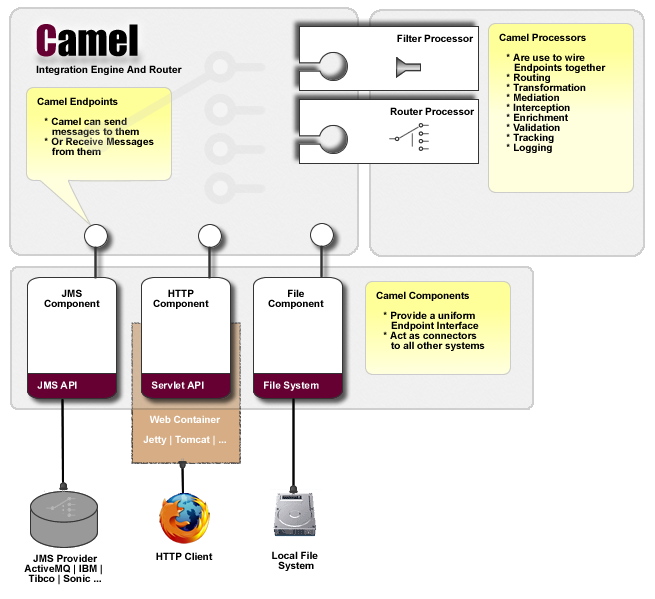Architecture
Camel uses a Java based Routing Domain Specific Language (DSL) or an XML Configuration to configure routing and mediation rules which are added to a CamelContext to implement the various Enterprise Integration Patterns.
At a high level Camel consists of a CamelContext which contains a collection of Component instances. A Component is essentially a factory of Endpoint instances. You can explicitly configure Component instances in Java code or an IoC container like Spring, or they can be auto-discovered using URIs.
An Endpoint acts rather like a URI or URL in a web application or a Destination in a JMS system; you can communicate with an endpoint; either sending messages to it or consuming messages from it. You can then create a Producer or Consumer on an Endpoint to exchange messages with it.
The DSL makes heavy use of pluggable Languages to create an Expression or Predicate to make a truly powerful DSL which is extensible to the most suitable language depending on your needs. Many of the Languages are also supported as Annotation Based Expression Language.
